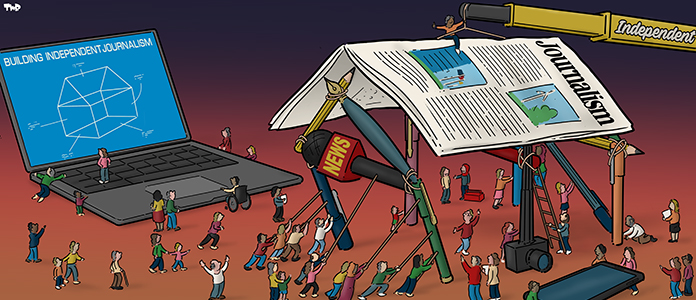Cars are responsible for 12% of the total CO₂ emissions of the European Union. As Europe introduces a tougher target for emissions cuts (at least 55% by 2030), the carbon pollution of new cars is becoming an increasingly important part of carmakers' marketing. Lower emissions often mean access to congested city centres, lower congestion taxes, and sometimes generous subsidies.
Transport accounts for more than 10% of the average European household budget, with car ownership representing the largest single item. For many people, particularly renters, a car is often their most valuable possession. It's no wonder, then, that it's a carefully considered investment for most Europeans. But can people trust the manufacturers’ emissions figures when deciding to buy or replace their vehicle? Our investigation in three European countries shows that the emissions declared by car manufacturers tend to be much lower than those measured in real-life everyday usage.
A thorough analysis of CO₂ emissions databases, as published by the European Environment Agency (EEA), shows the full extent of the discrepancy between lab-test and real-world emissions by combustion-engined and plug-in hybrid electric vehicles (PHEVs) in France, Italy and Romania between 2021 and 2023. Several of the best-selling cars in each country were among the models tested, and some of them qualified for public subsidies aimed at supporting the transition to low-emission transport.
Even worse, the discrepancy between CO₂ emissions recorded in official documents and those observed in the real world tended to increase during that 2021-2023 period. For petrol- and diesel-fuelled cars, the increase was from 29.8% to 30.4% in Romania, from 20.3% to 21% in Italy, and from 19% to 19.7% in France. The discrepancies recorded for plug-in hybrid cars were even higher, ranging from 350% to 550%.
But how did we get here?
Italy’s “Ecobonus“
In Italy, the “Ecobonus” subsidy is available under certain conditions to companies and individuals who want to buy new and less polluting cars “to favour the lowering of CO₂ emissions in line with the EU rules”. In practice this means cars emitting 0-20 g/km of CO₂ (full-electric cars, or EVs), 21-60 g/km (mostly hybrids and plug-in hybrids), and 61-135 g/km (mostly latest-generation combustion-engined cars). In recent years, the Ministry of Industry has invested growing sums of public money to reach this goal: €963 million in 2021, €555 million in 2022, €575 million in 2023, and €761 million in 2024. Only €30 million was allocated in 2025, since non-EVs were removed from the subsidy scheme.
In particular, over the 2021-2023 period that we analysed, approximately 70% of the €2,093 million in subsidies provided by the government (€1,450 million) supported the purchase of cars with combustion engines. Logically, these were those with the highest emissions, yet they will be excluded from the Ecobonus only from 2025.
One result is that this policy has “significantly slowed down the transition to purchasing electric vehicles”, notes Andrea Boraschi, Italy director of Transport & Environment (T&E). The Brussels-based NGO filed – without success – an appeal to an Italian court in 2023, in which it denounced the incoherence of the Ecobonus definition of “non-polluting vehicles” as cars with CO₂ emissions up to 135 g/km. The purchase incentives for these cars pays little heed to the average emissions value for new vehicles in Italy. In 2022 this was fully 118.7 g/km (rising to 119.1 g/km in 2024).
We reached out to Italy’s Ministry for Business, and to Made in Italy (which is responsible for the Ecobonus initiative), asking whether they were aware of the discrepancies between the lab and real-life emissions gaps. A spokesperson told us that "[i]n implementing its measures, the Ministry relies exclusively on certified data reported on the vehicle registration document”, and that all vehicles subject to the Ecobonus “have contributed, along with the scrapping process, to a significant modernisation of the vehicle fleet and a significant reduction in emissions”.
However, our analysis of data from the European Environment Agency shows that emissions measured in the laboratory for vehicle-type approval are lower than those observed in real-world driving conditions after sale.
Emission gaps: the worst in the class
Let us take, for example, Italy’s best-selling models with substantial CO₂ gaps for the period 2021-2023, and among them only the ones which were eligible for a purchase subsidy. According to the disaggregated data collected from the European Environment Agency (EEA), we found that the worst performing car is the Citroen C3 (petrol, with an engine capacity of 1,200cc and power output of 81 kw). Its real-world CO₂ emissions were 34.82% higher than the laboratory-tested ones. It is followed by the Fiat Panda (petrol, 1,000cc, 52 Kw), with a 34.19% gap, and by the Dacia Sandero (petrol, 1,000cc, 67Kw), with a 29.71% gap.
Within the hybrid plug-in cars, the worst-performing models are the Mercedes GLA Class (1,300cc, 120 Kw) with real-world CO₂ emissions 364.69% higher than the lab test; the Ford Kuga (2,500cc, 112 Kw) with a gap of 321.99%; and the Peugeot 3008 (1,600cc, 133 Kw) with 305.27%. All those models benefitted from a maximum public subsidy per vehicle of between €2,000 (for new combustion-engined cars with scrapping, or new hybrids without scrapping), €4,000 (for new hybrids with scrapping) and €5,000 (for electric cars with scrapping).
Most of the vehicles that were funded by the Ecobonus scheme are still on the road and therefore emit substantially more than the figure declared on their official certificates. In fact, according to data collected by Automobile Club Italia (ACI), Italy’s car fleet is increasingly old: in 2024, the median age of cars was 13 years (2 months more than in 2023).
We have asked Italy’s business ministry and Made in Italy to share data on the models funded by the Ecobonus scheme that were taken into consideration for our analysis. An official replied that the ministry does not have the disaggregated data.
Subsequent to a separate request of documents, Invitalia (the Italian agency responsible for collecting the list of models that qualify for the Ecobonus incentive) told Voxeurop that it was not in a position to share this information.
The contradictory situation in Italy has reached the EU level. In assessing the updated Italian national energy and climate plan (NECP) for 2021-2030, the Council of the EU, which represents the member states, issued a set of country-specific recommendations in which it invites the Italian government to “reduce environmentally harmful subsidies”, and stresses the need for a roadmap with measures to phase out fossil-fuel subsidies.
The French bonuses
In France, several measures have encouraged switching to less polluting vehicles. The Bonus écologique was a subsidy for the purchase of a new vehicle, particularly of EVs. It aimed to make low- or zero-emission cars more affordable, but was discontinued in 2025. Introduced in 2015, the conversion bonus took a different approach: it encouraged the replacement of an old vehicle with a less polluting model, either new or second-hand. In exchange for scrapping an old car, people could receive financial assistance (aimed particularly at low-income households) to buy or lease a vehicle considered to be cleaner. This programme was discontinued in 2024.
According to a report by France’s environment ministry, 110,000 conversion bonuses were awarded in 2021 at a cost of €276 million. The report hails a “positive economic and environmental balance in 2021, estimated at +€47 million” – taking into account lower maintenance costs, lower fuel costs, reduction of fine particles, CO₂ etc. – and claims that “the beneficits [...] are greater when the beneficiaries are low-income households [...] or ‘frequent drivers’”. 53% of vehicles purchased through the conversion bonus in 2021 were ICEs and 37% were EVs.
In 2021, the maximum emissions figure for eligible new ICE vehicles was 132 g of CO₂/km. This was lowered to 127 g in 2022, and then to 122 g in 2023, thus contributing to an overall reduction in the number of eligible ICE vehicles.
The year 2022 marked the milestone of one million cars replaced with the support of the conversion bonus since the scheme was introduced in 2015, according to a report published the following year. 90,000 grants were awarded to private vehicles, at a cost of €233 million. Of the vehicles purchased, 59% were EVs, 35% were ICEs, and 5% were PHEVs.
In 2023, approximately 72,000 subsidies were awarded for the purchase of passenger cars, at a budgetary cost of €224 million.
Sixty-six percent of these vehicles were electric, 32% were petrol-powered, and 2% were plug-in hybrids. The official report for 2023 highlights estimated socio-economic gains of €95 million, including reduced air pollution from fine particulate matter, fuel and maintenance savings, and lower carbon emissions.
Partial data gathered by the European Environment Agency and analysed by Voxeurop shows that the on-road emissions of some of the best-selling vehicles in the years 2021, 2022 and 2023 tended to exceed those recorded in the laboratory. Our analysis shows that some of these models were eligible for the conversion bonus, while having real-world emissions exceeding the limit.
The Renault Clio V, for example, was the most popular vehicle on the French market in 2023 (97,471 units sold, or 5.5% of sales, according to figures from the Automotive Platform). We found that in 2023 some versions of the Clio had real-world emissions 20% to 30% higher than laboratory emissions. The 999cc, 49kW petrol model has average lab emissions of 120,25 g of CO₂/km, calculated with data by the EEA. It was thus eligible for the conversion bonus, as its emissions were under the 122 g of CO₂/km in force that year. However, according to our calculations, the actual on-the-road emissions of that model are in fact closer to 144,31 g – 20.01% higher. Similarly, some versions of the Peugeot 208, Peugeot 2008, Dacia Sandero and Citroën C3 – four of the five best-selling models in France in 2023 – may have been eligible for the bonus despite exceeding carbon emissions limits. The same situation prevailed in 2021 and 2022.
According to the French government, the conversion bonus resulted in a reduction of (highly toxic) fine-particle emissions. This was thanks in particular to the scrapping of old diesel vehicles, as well as a reduction in carbon emissions of 160,000 tonnes in 2021 and 120,000 tonnes in 2022. Beneficiaries of the bonus also enjoyed lower vehicle maintenance costs.
We were not able to verify the positive balance of the conversion bonus, since the government holds the data on the emissions of the scrapped vehicles versus the newly circulating ones, and it has not replied to our requests to share it. Although we cannot say with certainty that the conversion bonus – which aimed to fund cleaner cars and modernise the French car fleet – ended up supporting dirtier vehicles than expected, the significant gap between lab figures and real-world emissions highlights a flaw in French law.
Contacted by Voxeurop, the Ministry for Ecological Transition mentioned the need to “rationalise the number of schemes and refocus budgetary aid for greening vehicles on the ecological bonus [...] and on the retrofit bonus”, in a “tight budgetary context”. In July 2025, the ecological bonus was replaced by the “Coup de pouce pour l'achat d'une voiture électrique” (“Helping hand for the purchase of an electric car”), a subsidy scheme operated by the industry itself.
According to Lucien Mathieu of T&E’s French section, subsidies to individuals are only the tip of the iceberg. Across Europe, purchases of electric and combustion-engined vehicles are influenced by numerous taxes: acquisition and registration taxes, VAT subsidies for company cars, etc.
In Romania, lower pollution based on thin air
In Romania, the “Rabla” programme was set up in 2013 to subsidise the purchase of a limited number of new cars, using the money obtained by Romania from selling green certificates (AKA carbon emission permits). Like in France, the intended goal is to reduce the total CO₂ emissions of the car fleet by removing old vehicles and incentivizing less-polluting new cars.
274,423 old cars were scrapped between 2021 and 2024, representing 27% of a total of 1,010,456 scrapped over the 20 years of the Rabla programme. During the same 4-year period, 171,051 new cars were purchased with the help of Rabla Clasic, accounting for 25.8% of a total of 660,486 subsidized cars over the entire duration of the scheme.
The Rabla bonuses have been granted only to Euro 6 vehicles and at certain lower CO₂ thresholds. Since 2018, mandatory maximum thresholds have been imposed for new cars admitted into the programme. Gradually, the thresholds have been lowered, to 155 g/km in 2023, 150 g in 2024, and 145 g in 2025. The 2025 guidelines clearly specify that the effectiveness of this programme is not measured by the amount of pollutants reduced but rather by the annual reduction of CO₂ emissions.
Unfortunately, there has never been any measurement of the actual amount of CO₂ or pollutants reduced as a result of scrapping old cars and purchasing new ones.
The Romanian Environmental Fund Administration (AFM) told us that the models of cars being scrapped are not recorded, only their brands and the number of units for each carmaker. Likewise, the models of new cars purchased through the Rabla programme are not recorded in a public database – only the number of units for each carmaker.
It can therefore only be assumed that newer cars pollute less, but the actual performance of public spending – 2.66 billion lei (€ 538.5 million) were paid out in the last 4 years alone by the Rabla Classic scheme – is impossible to measure. However, according to our analysis, the average CO₂ emissions of new cars, including the best-selling subsidised models, are 30% more in real life conditions than in the Worldwide Harmonised Light Vehicle Test Procedure (WLTP) test.
This means that most often they emit significantly more than the 155 g/km CO₂ threshold of 2023. For example, the worst gaps for petrol cars in 2023 were recorded for the Dacia Logan (999cc engine, 67 kW, and a 43.71% gap), Ford Puma (999cc, 112 kW, 41.79% gap), and Dacia Jogger (999cc, 81 kW, 40.15% gap). The gaps for diesel cars are a little bit lower, but still significant. The worst offenders among them in 2023 were the Skoda Octavia (1,968cc, 110 kW, 38.01% gap), Renault Clio (1,461cc, 74 kW, 37.63%), and Ford Kuga (1,995cc, 140 kW, 32.84%).
The Big Five respond
We reached out to the five top-selling car manufacturers in the EU (BMW, Mercedes-Benz, Renault, Stellantis, and Volkswagen). We showed them the results of our analysis for their respective car models.
“Compared to the certified WLTP value, deviations are possible under real-world driving conditions”, a Mercedes-Benz spokesman, David Börsig, told Voxeurop. “There could be absolute deviations depending on the test cycle and the conditions of use”, echoes Christophe Lavauzelle, a Renault press officer.
A spokesperson for Volkswagen added that CO₂ emissions gaps "can be explained by a number of factors, such as additional equipment and accessories, which affect weight, rolling resistance, and aerodynamics, as well as external conditions like traffic, weather, and – most importantly – individual driving behaviour.”
“Results obtained through different methodologies are not directly comparable to EU certification values”, said Fernao Silveira, a spokesperson of Stellantis. "All our vehicles fully comply with regulatory parameters in the markets where they are offered.” BMW had not responded to our questions at the time of the publication.
A well-established lobby in Brussels
In May 2025, the European Parliament voted by an emergency procedure, supported by the conservative European People’s Party and European Conservative and Reformists groups in favour of relaxing emissions caps for cars and light commercial vehicles. The text was adopted with a majority of 458 votes in favour, 101 against and 14 abstentions. Only the Greens and the Left groups opposed the amendment.
Originally, carmakers had to reduce carbon emissions of new cars and vans by 15% by 2025 compared to a 2021 baseline, in order to keep the emissions of the EU fleet at 93,6 grams CO₂/km for the years 2025-2029. The amendment sets the targets over a three-year (2025-2027) average rather than annually, thus allowing carmakers to avoid the fines imposed for non-compliance in 2025. The measure, which was originally proposed by the European Commission on 3 March 2025, was interpreted as a conciliatory gesture towards the European automotive industry, which argued that lagging sales of electric vehicles put the 2025 target at risk.
The same approach has been taken by most national authorities, which approved the Commission's proposal. Only Sweden and Belgium abstained. Romina Pourmokhtari, the Swedish environment minister, told Voxeurop that the Swedish government criticised the amendment on the grounds that it would penalise those "Swedish companies that have assumed their responsibilities and paved the way for the climate transition” (by complying with the current rules). The Belgian delegation refused to comment.
With a lobbying budget of over €14 million for 2025, the industry is one of the biggest spenders
“[Given that] the averaging effectively delays the 2025 CO₂ targets, fewer electric vehicles will get newly registered than otherwise would be the case”, commented the International Council for Clean Transportation (ICCT). Instead, more combustion vehicles with comparably high emissions will be registered, notes this NGO, which advocates for transport sustainability. Those new vehicles are used for about 250,000 km on average before they are taken off the road at the end of their lifetime. “Considering that CO₂ emissions during real-world driving are on average 19% higher than the official values”, ICCT experts warn that “each additional gram in type-approval CO₂ emissions results, on average, in additional real-world fleet CO₂ emissions of about 3.2 million tonnes”.
The Commission's initial proposal (and the subsequent vote in the European parliament) followed an intense period of lobbying by several automotive-sector players.
The car industry has a strong presence in the EU capital. Major firms such as Volkswagen, Mercedes-Benz, BMW, Renault and Stellantis are represented individually, and together they can call on organisations like the European Automobile Manufacturers' Association (ACEA). With a lobbying budget of over €14 million for 2025, the industry is one of the biggest spenders (ranking tenth in Corporate Europe Observatory and LobbyControl's EU influence spending ranking). In 2025 alone, ACEA had a budget of over €5 million to promote the interests of the automotive sector. This may be just the tip of the iceberg: similar organisations have not declared their budget for the current year.
This investment in lobbying is reflected in regular contacts between the industry and European institutions. Between September 2024 and June 2025, the six organisations identified by CEO and LobbyControl (ACEA, Volkswagen, BMW, Mercedes-Benz, Michelin and FIGIEFA) met on more than 90 occasions with EU officials. By comparison, the NGO T&E met with EU officials on 27 occasions during the same period. These figures do not include other major players and manufacturers operating at a national or European level.
ACEA has repeatedly lobbied EU representatives for a multi-year compliance system. Its arguments make mention of record fines for manufacturers and the threat to the energy transition. During the period covered by our request, we gathered around fifteen emails, briefings, and position papers that lay out the ACEA's position.
While these partial figures do not indicate that lobbying by the car industry alone influenced the European Commission's decision, they do emphasise the sector's significant presence at the highest levels of the EU institutions. This is also shown clearly by documents obtained by Voxeurop from the Directorates-General for Climate Action (DG CLIMA) and the Internal Market and Industry Directorate-General (DG GROW), which cover the periods January-October 2024 and January-April 2025.
For example, a document dated 18 September 2024 and obtained by Voxeurop shows that the ACEA alerted Ursula von der Leyen about the “trend of a stagnating market share of battery-electric cars in the EU”. The association called on the European Commission president to take “urgent relief measures before new CO₂ targets for cars and vans come into effect in 2025”. The association also expressed concern about the prospect of multi-billion-euro fines.
On the other side, major carmakers such as BMW and Stellantis were opposed to such changes. In a letter sent by Stellantis to Von der Leyen on 10 October 2024, the group (which holds prominent Italian brands such as Fiat and Alfa Romeo), reiterated that it was against a possible amendment of 2025 CO₂ targets. Firstly, because this “would severely distort the level-playing field, favoring certain carmakers to the detriment of the virtuous ones who made the required investments and business-model adaptations in preparation for compliance. Secondly, because any hasty changes would undermine the stability and predictability of the regulatory framework so much needed in this time of industrial transformation.”
Europe’s second largest carmaker publicly announced a U-turn on its position only after Ursula von der Leyen announced a measure of flexibility in meeting the CO₂ target. At the time of publication, the Stellantis spokesperson had not offered comment on its change of strategy.
In a briefing to Director-General of the DG CLIMA Kurt Vandenberghe dated 15 January 2025, ACEA held that “the political momentum lies with a multi-annual average compliance mechanism, which they would also support”.
In a document addressed to Wopke Hoekstra, the European Commissioner for Climate, Net Zero and Clean Growth, on 5 February 2025, ACEA provided reassurance regarding the consequences of a multi-year average system, arguing that “there will be no adverse environmental impact as any ‘mis-compliance’ must be offset”. Such a system, says the document, “provides an ability to react to short-term market fluctuations, allowing carmakers to meet CO₂ reduction goals steadily rather than through abrupt, compliance-driven measures”.
Shortly after the second meeting of the Strategic Dialogue on the Future of the European Automotive Industry – during which key stakeholders met with top EU officials, including Von der Leyen – and following the Commission's proposal, ACEA sent a letter to Hoekstra in which it welcomed the gesture made to the car industry.
Despite repeated requests, ACEA declined to answer our questions concerning their relations with the European institutions.
Unconvincing arguments
The majority of the industry's arguments have never convinced Transport&Environment. “And yet automaker after automaker has issued exaggerated statements about the ‘crisis’ and potential fines, blaming everyone for not doing enough. One minute they are demanding the EU's car CO₂ targets be scrapped so they can pollute more. Then the next they are telling investors they can comply with the targets”, says Julia Poliscanova, T&E's senior director of the division for vehicles, electrification and battery supply chains. The NGO also contests the way in which the automotive sector calculated fines for non-compliance, saying that the 15-billion figure was “exaggerated”.
Lucien Mathieu, a car-industry specialist at T&E, told Voxeurop that the stagnation in electric vehicle sales in 2024 was not primarily due to a lack of interest or infrastructure, but rather the result of the “stop and go” logic of the European market. Manufacturers often wait until the final deadline for European standards, so as to boost sales of electric vehicles and meet environmental targets. However, as recently noted by ICCT Europe director, Dr Peter Mock, “Europe’s electric vehicle transition is on track and accelerating. Carmakers are just 9 grams away from their next CO₂ target in 2027. The preferred strategy to hit this goal on schedule is selling more battery-electric cars, and this comes as no surprise. Battery costs are plummeting, charging infrastructure is expanding, and battery-electric cars are becoming cleaner faster than expected.”
The most recent data collected by ICCT paints a contrasting picture. While Europe saw a decline in EV registrations from 18% in June to 17% in July 2025, in the same year there was an average overall increase of 4% (from 13% to 17%) compared to 2024. However, although manufacturers have managed to protect their interests with the amendment to the EU Regulation on CO₂ emissions targets, only BMW (with average emissions 1% below the limit) is currently compliant with new targets for the 2025-2027 period. All other manufacturers or their respective pools (groups of manufacturers) would currently exceed the limits: Volkswagen by 14%, Stellantis by 7%, Renault by 6% and Mercedes-Benz by 4%.
The battle has barely been won, yet the automotive sector and its allies are already preparing for the next one. The target is 2035 and the goal of reducing carbon emissions by 100%. In September 2025, the European Commission announced that it would bring forward a review of its zero-carbon emissions target for 2035 by the end of the year.
Methodological note
We used official data from the European Environment Agency (EEA), which was provided by European Union member states. To compare average CO₂ emission gaps at the car model level, we considered cars with the following characteristics: car manufacturer; model (commercial name); fuel type/mode; engine power; displacement; and CO₂ emissions in g/km (WLTP). We also considered the year of registration. The International Council on Clean Transportation (ICCT) provided support for data cleaning and aggregation.
🤝 This investigation was developed with the support of Journalismfund Europe and IJ4EU. The InternationalPress Institute (IPI), the European Journalism Centre (EJC) and any other partners in the IJ4EU fund are not responsible for the content published and any use made out of it.


Do you like our work?
Help multilingual European journalism to thrive, without ads or paywalls. Your one-off or regular support will keep our newsroom independent. Thank you!













Join the discussion
Become a member to translate comments and participate